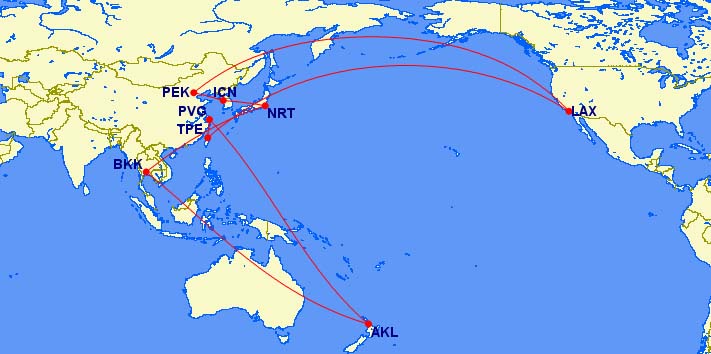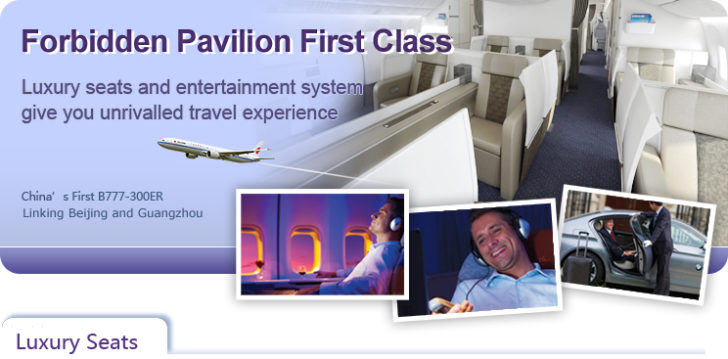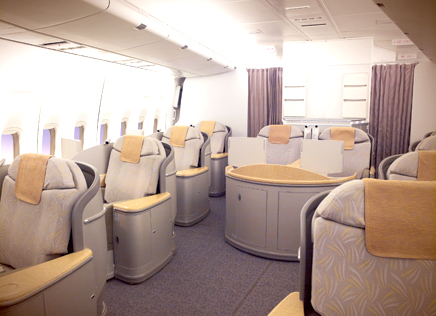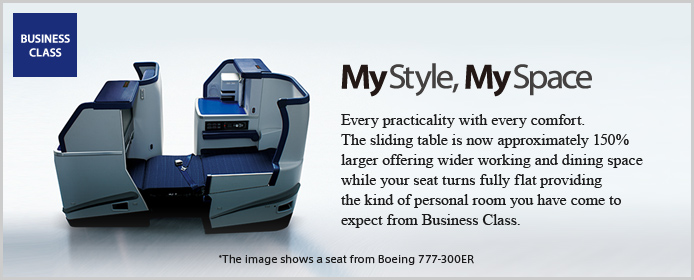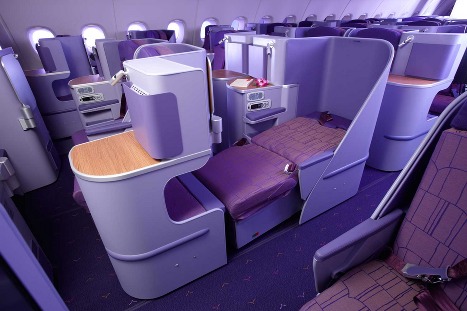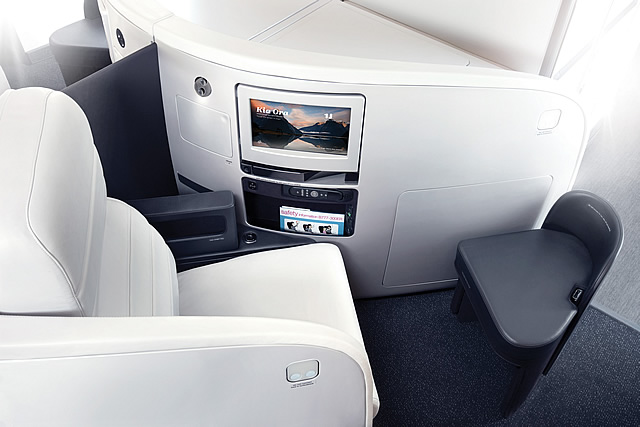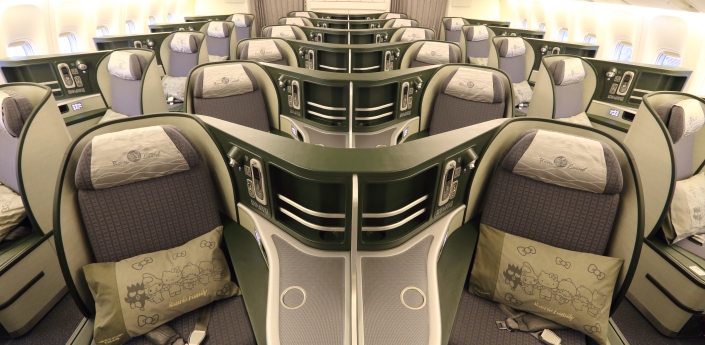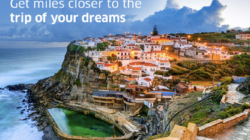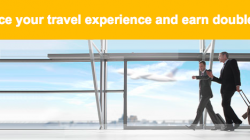Just a friendly reminder that United’s Mileage Plus devaluation goes into effect on February 1, 2014. You don’t have to fly by February 1, 2014. You just have to book your trip by then. With a couple of weeks to go before the Great Devaluation, I decided this was a perfect time to burn my remaining cache of United miles. Lucky for me, one of my good friends had a ton of United miles also, so we decided to plan a trip together for later this year.
In deciding where we wanted to go, we looked at some Star Alliance partner airlines that we have not experienced yet. Air New Zealand, Air China and ANA have all been on our list and we have not had a chance to experience their premium cabins yet. We also looked at some destinations that we wanted to visit. Auckland, Japan and South Korea were all on the top of our short list. We both wanted to visit New Zealand and Japan, so that was easily agreed upon. I also wanted to visit South Korea but I couldn’t talk him into it.
Now, let’s recap some United routing rules for award redemption.
United Airlines will let you:
- Travel from the US to Asia, by way of Europe.
- Travel from the US to Africa/Middle East, by way of Europe.
- Travel from the US to Australia/New Zealand, by way of Asia.
- Travel from the US to India and the Middle East, by way of Europe or Asia.
- On a roundtrip ticket, you are allowed one stopover and two open jaws.
- Your stopover can be anywhere along your route of travel and is not limited to the region of your final destination. Your stopover can last as long as a year before you have to continue on with your trip. Stopovers are great because they allow you to visit two places for the price of one award ticket.
United Airlines will NOT let you:
- Travel from the US to Australia/New Zealand, by way of Europe.
- Travel from the US to anywhere, by way of South America. If you go to South America, you have to stay in South America. For example, you cannot travel from the US to Brazil to South Africa or from the US to Peru to Japan. I know. It makes no sense to me either.
- Book more than 8 segments per roundtrip ticket.
With those routes and airlines in mind, we decided to plan a trip to New Zealand, by way of Japan. That way, we could hit up both countries and cross off at least two of those airlines on our list.
Using United Miles to Get to Australia and New Zealand
To get to Australia/New Zealand from the US, United currently charges you 80,000 miles for economy, 135,000 miles for business class and 160,000 miles for first class. Adding a stopover in Asia won’t add any additional miles or fuel surcharges to your ticket. After February 1, 2014, United will charge 80,000 miles for economy, 140,000 miles for business class and 160,000 miles for first class IF all your flights are on United Airlines metal. For Star Alliance partner flights, the price will be 80,000 miles for economy, 160,000 miles for business class and 260,000 miles for first class! That’s ridiculous!
So I sat down on United’s website and tried some sample routings. United’s website is the best place to start looking for award space on both United and Star Alliance partner flights. Starting with the longest “over the water” segments first, I quickly ran into some problems. We were looking to travel during Labor Day week and that proved to be a lot harder than expected for three reasons. Firstly, we were looking for premium cabin award space for two seats, not just one. Secondly, award availability was pretty limited that far out because some airlines hold back award inventory until closer to departure date. And lastly, airlines such as Air New Zealand and Singapore Airlines just don’t release premium cabin award space to routes to/from the US for United award redemption. If we really wanted to fly them, we would have to route through Asia. Lucky for us, we were doing a stopover in Japan. Flights from the US to Asia are a lot easier to find availability for than flights from the US to Australia/New Zealand.
Looking at different dates, airports and routes, I was finally able to find award availability for both of us to get to Auckland and Tokyo. My advice for you is to look at the airline that you want to fly and review their route map. For example, Air New Zealand flies to Hong Kong, Shanghai and Tokyo from their hub in Auckland. If you can’t find award available from Tokyo to Auckland, look at the other routes such as Shanghai or Hong Kong. Another trick is to look at airlines that fly into certain airports. For example, to fly to Auckland, you can fly Air New Zealand, Singapore Airlines from Singapore or Thai Airways from Bangkok. To see which airlines fly into a certain airport, just do a Wikipedia search of the airport. The Wikipedia page will list all the airlines that fly in/out of the airport and to from which airports.
I’m not going to lie. This is the painstaking part. It can get frustrating when you don’t find any premium cabin space but just keep at it. Play around with different dates, airlines and routes. Once you find the flights you like, don’t forget to check the aircraft equipment on those flights! This is very important. Let me give you an example. Air New Zealand flies two different planes to Tokyo Narita, a Boeing 777 and a Boeing 767. Depending on which flight you pick, you can end up on a spacious herringbone style lie flat seat on the B777 or a traditional recliner seat on the B767. I don’t know about you but a 10+ hour flight on a recliner seat is not gonna cut it and a quick two minute search on seatguru.com can easily prevent that.
Here are a few airlines and routes just to help you out.
- Air Canada flies from Vancouver to Sydney, Australia.
- Air New Zealand flies from Auckland to Hong Kong, Shanghai and Tokyo Narita.
- Asiana flies from Seoul to Sydney, Australia.
- EVA Air flies from Taipei to Brisbane, Australia.
- Singapore Airlines flies from Singapore to Auckland and Christchurch, New Zealand and Adelaide, Brisbane, Melbourne, Perth, and Sydney, Australia.
- Thai Airways flies from Bangkok to Auckland, New Zealand and Brisbane, Melbourne, Perth and Sydney, Australia.
- United flies from Los Angeles and San Francisco to Sydney and Melbourne, Australia.
It took me about an hour of looking but I was able to find award flights for both of us.
- My itinerary: Los Angeles – Beijing – Seoul – Tokyo – Bangkok – Auckland – Shanghai – Taipei – Los Angeles.
- My friend’s itinerary: Los Angeles – San Jose – Tokyo – Bangkok – Auckland – Shanghai – Taipei – Los Angeles.
Great Circle Map router
Now, remember when I said I wanted to go to South Korea and my friend didn’t? Well, I decided to leave the US a day earlier than him and booked myself a long layover in Seoul, 23 hours to be exact. United considers anything under 24 hours to be layover and not a stopover. It doesn’t matter if it’s 1 hour or 23 hours, layovers don’t cost you any more miles but do count towards your total segments allowed on a trip. If you were counting, I’m at eight segments and my friend is at seven segments for our trip. With a 23 hour layover in Seoul, that’s easily enough time for me to leave the airport, explore the city, make some new friends and be back in time for my connecting flight to Tokyo. I won’t get much sleep but it’ll be worth it. And since I’m leaving a day earlier than him, we will both arrive in Tokyo on the same day and continue on the rest of the trip together. 🙂
Because the itinerary was fairly complicated, I couldn’t book it online and had to call United and speak with an agent. United’s website is great but it will not let you route anything too crazy. You always have to call. Just write down all the segments, call the United reservations line, and feed the individual segments to the phone agent. They should be happy with you because you did all the work for them. All they have to do is plug in the routes. And ALWAYS ask to have the phone fee waived. Tell them that you tried to book this online but weren’t able to.
The first reservations agent I spoke to was no fun at all. She was immediately confrontational and asked why I didn’t book this online. I told her it was a little complicated and the website wasn’t able to book it for me. She responded by saying, “If the website can’t book it for you, what makes you think I can?” I thanked her for her time, hung up and tried again. The second agent didn’t know what I was trying to do. She thought I was trying to do an “Around the World” ticket. I wasn’t. I hung up and tried again.
The third agent was much more helpful and plugged in the segments that I had already located. However, there was something wrong and she was unable to ticket it. I checked and double checked my routing and everything appeared right to me. We couldn’t figure out what was wrong. I thanked her for her time and tried again. The fourth time proved to be much more successful. I provided her with my itinerary and fed her the route segments one by one. She inputted the individual segments in and was able to book my ticket immediately without any issues. She then helped me with my friend’s itinerary and that was booked successfully also. It’s amazing how different agents come up with different results when inputting the same information into the same system. It kills me but sometimes when you don’t get what you want, you just have to hang up and call back.
In case you were wondering, United will let you book a trip for someone else using their own miles. I used my miles to book my trip and I used my friend’s miles to book his trip. All you need is their Mileage Plus and PIN number. The PIN number can be set from your United Airlines Mileage Plus account page once you are logged on. My account > Profile > User name > Change PIN number.
After it was all said and done, my trip cost me 147,500 United miles and $109.10 in taxes in fees. My LAX – PEK and ICN – NRT segments were booked in first class. All other segments were in business class. My friend’s ticket cost him 135,000 United miles and $87.30 in taxes and fees. All his segments were in business class. My ticket was a little pricier due to the two upgraded legs to first class. In my opinion, that was totally worth it considering one of those legs is almost 13 hours.
The Trip:
So combined, we will be experiencing the following products.
Air China’s first class semi-suite from Los Angeles to Beijing (B777-300ER) and business class from Beijing to Seoul (A330).
Air China First Class
Asiana first class from Seoul to Tokyo Narita (B747-400).
Asiana First Class
ANA business class from San Jose to Toky Narta (B787).
ANA staggered business class
Thai Airways business class from Tokyo Narita to Bangkok (A380) and from Bangkok to Auckland (B777-200).
Thai A380 Business Class
Air New Zealand business class from Auckland to Shanghai (B777-200).
Air New Zealand Business Premier
Air China business class from Shanghai to Taipei (A340).
EVA Airways business class from Taipei to Los Angeles (B777-300ER).
EVA Air Business Class
So those are my tips for the day. Feel free to let me know if you have any questions, comments or concerns. Need help booking an award ticket? Just ask and I’ll see what I can do.


